#1 Philips 3200
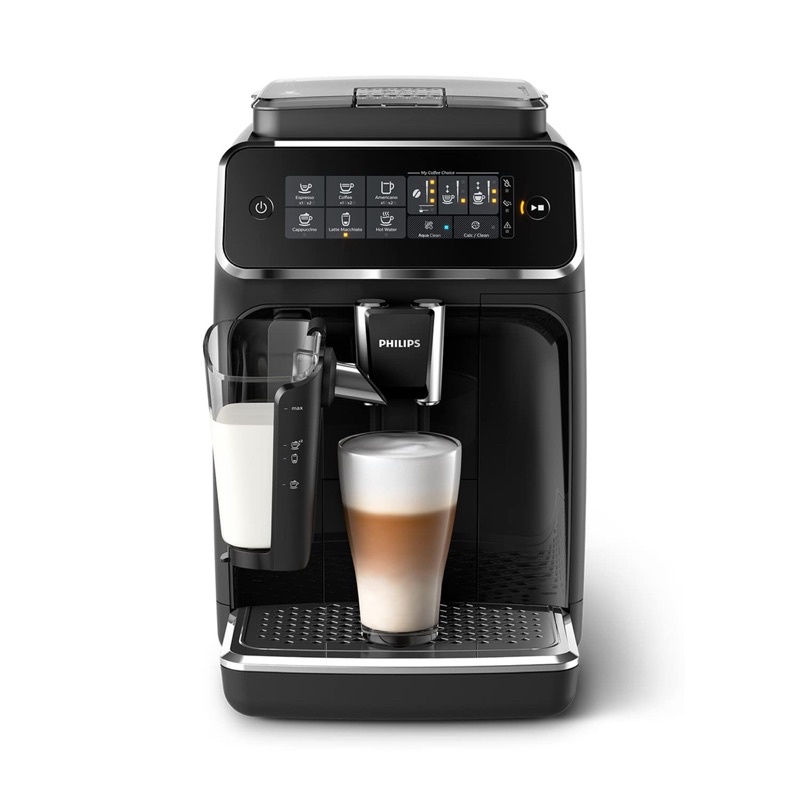
- Easy to use and navigate
- Affordable
- Compact design
#2 Philips 4300
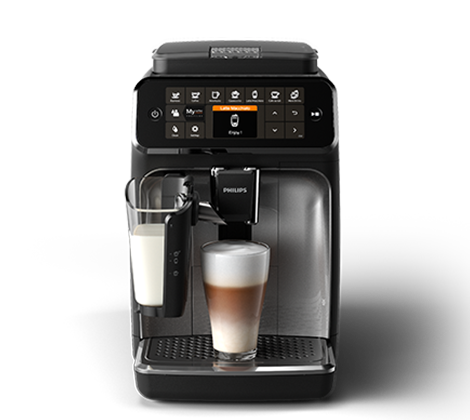
- Wide variety of drinks
- Intuitive touchscreen
- Compact with milk frothe
#3 Philips 5400

- Wide variety of drinks
- Advanced customization
- User profiles
As someone who loves coffee but doesn’t always have the time or energy to make it the traditional way, finding the right fully automatic espresso machine has been a game-changer. The Philips 3200 vs 4300 vs 5400 comparison intrigued me, as these machines are all highly rated and seem tailored to different preferences and budgets. After trying all three, I settled on the Philips 4300, which struck the perfect balance for my needs. Here’s my experience and what I’ve learned.
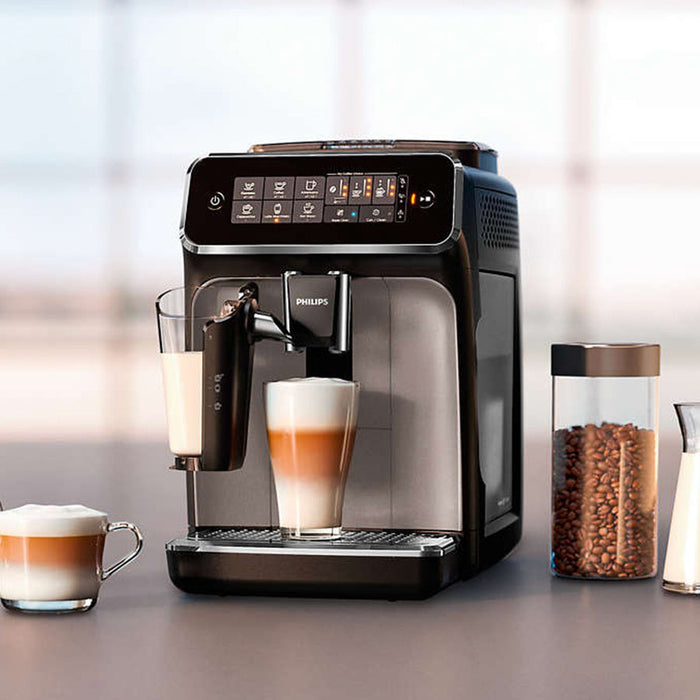
First Impressions: Philips 3200, 4300, and 5400 Side by Side
I first unboxed the three machines, it was clear they were all built with quality in mind. Their sleek designs and compact footprints were consistent, which is great if you have a smaller kitchen or limited counter space. The materials felt sturdy, and the buttons and displays were responsive.
While the Philips 3200 is the most budget-friendly of the three, its simplicity was both an advantage and a limitation. On the other hand, the Philips 5400 is feature-packed but felt a little overwhelming for someone like me who enjoys coffee but isn’t a barista. The Philips 4300 hit the sweet spot—it had enough features to feel premium without overcomplicating my morning routine.
What Stands Out About the Philips 4300?
Intuitive Display and Controls
One of the first things I appreciated about the Philips 4300 was its TFT display. It’s bright, easy to read, and made navigating the settings straightforward. Whether I wanted a quick espresso or a creamy cappuccino, the process was simple. I liked that I didn’t have to spend hours reading a manual or guessing which button did what.
LatteGo Milk System
As someone who loves a good latte, the LatteGo milk frothing system was a standout feature for me. It’s incredibly easy to use and clean—there are only two parts, and there are no hidden tubes to deal with. The milk froth it produces is smooth and consistent, making my cappuccinos and lattes feel like they came from a professional coffee shop.
The LatteGo system was also a relief when entertaining guests. It’s quick and efficient, and my friends were impressed by the quality of the milk-based drinks. The Philips 3200 also has this feature, but the 4300 felt like an upgrade due to its extra customization options.
Brewing Customization: Philips 3200 vs 4300 vs 5400
Beverage Options
One of the reasons I chose the Philips 4300 over the 3200 was its variety of drink options. With the 3200, I could make five basic drinks, which was fine but felt limiting over time. The 4300 offers eight beverage options, including espresso, cappuccino, latte macchiato, and even a strong black coffee option for mornings when I needed an extra caffeine kick.
The Philips 5400 was impressive with its 12 beverage options, but I realized that I didn’t need that many choices daily. The 4300’s eight drinks were more than enough for me and my household, making it the perfect middle ground.
User Profiles
The Philips 4300 supports two user profiles, a feature the 3200 lacks entirely. This was especially useful in my home, as my partner prefers their coffee stronger and with less milk. With the profiles, we could save our preferences and switch with the push of a button. The 5400 offers four profiles, which might be better for larger households, but two profiles worked just fine for us.
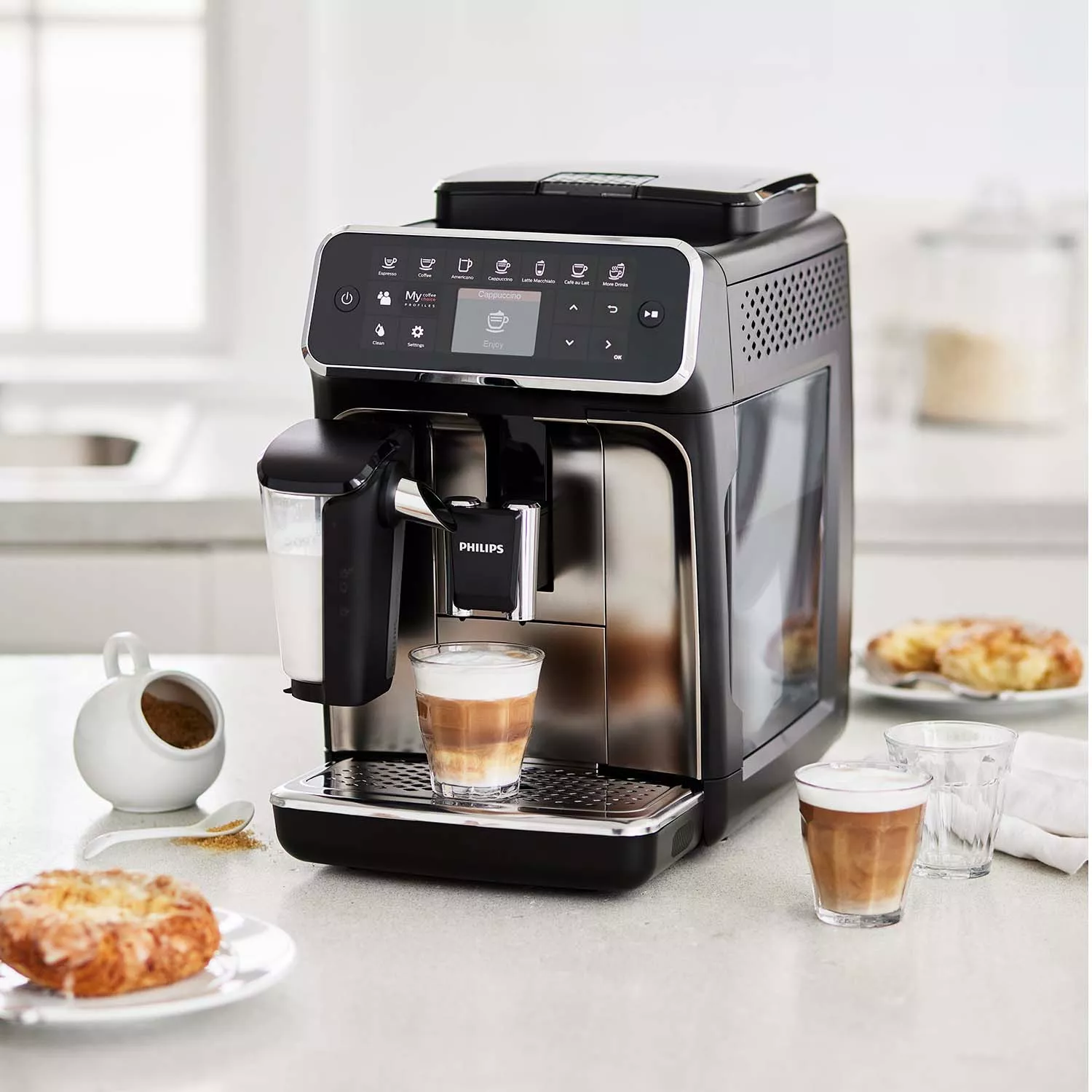
Cleaning and Maintenance Made Simple
One of the biggest concerns I had before buying a fully automatic espresso machine was maintenance. Would it be a hassle to clean? Would it take too much time? Thankfully, the Philips 4300 eased those worries.
AquaClean Filter
The AquaClean filter was a game-changer. It reduced the frequency of descaling significantly—after installing it, the machine indicated that I wouldn’t need to descale until I’d brewed about 5,000 cups. For someone who uses the machine daily, this feature alone made the Philips 4300 worth it.
Removable Brew Group
The removable brew group was another practical feature. I could rinse it under running water weekly, ensuring that the machine stayed clean and the coffee tasted fresh. This was consistent across all three models, but it’s worth highlighting because it made maintenance so easy.
Cleaning the LatteGo System
The LatteGo milk system is also a breeze to clean. After frothing milk, I simply detached the parts, gave them a quick rinse, and occasionally popped them into the dishwasher. Compared to other milk frothing systems I’ve used, this was by far the simplest.
Grinding Performance and Coffee Quality
Built-In Ceramic Grinder
All three machines come with a ceramic grinder, which is durable and doesn’t overheat the beans, preserving their flavor. The 4300, like the 3200 and 5400, offers 12 grind settings, allowing me to adjust the fineness for different coffee types. I typically kept it on a medium grind, which produced consistently smooth espresso with a rich crema.
Aroma Strength Settings
The Philips 4300 lets you customize the aroma strength and coffee volume, which was perfect for tailoring my cup based on how I felt that day. This feature is available on the 3200 and 5400 as well, but the 4300 felt like the right balance between customization and simplicity.
Why I Chose the Philips 4300 Over the 3200 and 5400
While all three machines are excellent in their own right, the Philips 4300 stood out for a few key reasons:
- More Beverage Options: The 4300 offers eight drink options compared to the 3200’s five. It’s perfect for someone who enjoys variety but doesn’t need the 12 options of the 5400.
- User Profiles: The addition of two user profiles was a significant upgrade over the 3200 and met my needs without going overboard like the 5400.
- Ease of Maintenance: The 4300’s AquaClean filter and LatteGo system made cleaning and upkeep simple and stress-free.
- Price Point: The 4300 offers premium features at a price that feels justified, sitting comfortably between the budget-friendly 3200 and the feature-rich but expensive 5400.
Use Cases for the Philips 4300
The Philips 4300 is ideal for:
- Small to Medium Households: With two user profiles and eight beverage options, it caters well to households with varying coffee preferences.
- Entertaining Guests: The quick LatteGo milk frothing system and intuitive controls make it easy to prepare multiple drinks in no time.
- Busy Mornings: The fast heat-up time and one-touch functionality mean you can have a barista-quality coffee in under a minute.
- Coffee Enthusiasts: If you value customization but don’t want to feel overwhelmed by too many options, the 4300 is the perfect compromise.
What Could Be Improved?
While the Philips 4300 is impressive, there are a few areas where it could be better:
- Limited Profiles: Larger households might prefer the 5400’s four user profiles. Two profiles may feel restrictive if you have multiple coffee drinkers with unique preferences.
- No Hot Water Dispenser: While it has a hot water function, the 4300 lacks a dedicated hot water spout, which could be inconvenient if you regularly make tea or Americanos.
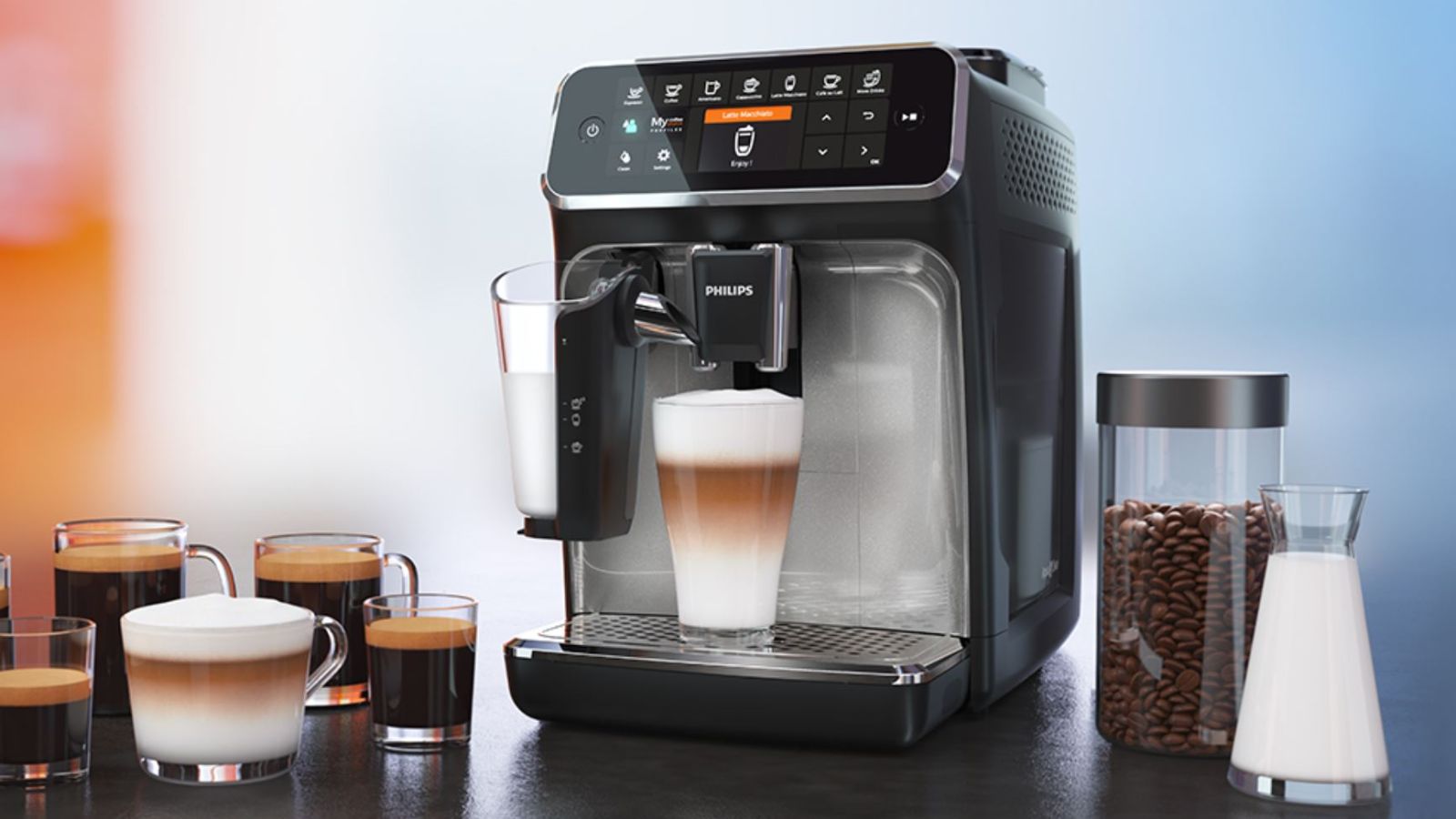
Product Review Conclusion
In conclusion, the Philips 4300 strikes an excellent balance between functionality, ease of use, and value. It’s a significant step up from the 3200 with its additional drink options and user profiles while being less overwhelming and more affordable than the 5400. If you’re looking for a fully automatic espresso machine that simplifies your coffee routine without compromising on quality, the Philips 4300 is a fantastic choice.
Frequently Asked Questions About Philips 3200 vs 4300 vs 5400
Q: What are the main differences between the Philips 3200, 4300, and 5400?
A: The main differences lie in the number of beverage options, user profiles, and features. The 3200 offers five drink options, the 4300 provides eight, and the 5400 has twelve. The 3200 does not have user profiles, while the 4300 offers two, and the 5400 features four. Additionally, the 5400 includes more advanced settings and options for customization.
Q: Which model is best for a small household?
A: The Philips 4300 is ideal for small to medium households due to its eight beverage options and two user profiles. It provides a good balance of variety and personalization without overwhelming complexity.
Q: Is the milk frother on the Philips 4300 easy to clean?
A: Yes, the LatteGo milk frothing system on the Philips 4300 is designed for easy cleaning. It consists of only two parts that can be rinsed under running water or placed in the dishwasher, making maintenance simple and quick.
Q: How does the AquaClean filter work?
A: The AquaClean filter is designed to reduce the frequency of descaling by removing impurities from the water. It allows you to brew up to 5,000 cups before needing to descale, provided you replace the filter regularly.
Q: Can I use pre-ground coffee with these machines?
A: Yes, all three models allow you to use pre-ground coffee thanks to a bypass doser. This feature is useful if you want to brew decaf or a specific blend without using the built-in grinder.
Q: What kind of maintenance do these machines require?
A: Regular maintenance includes cleaning the brew group (which is removable), rinsing the milk frother, and changing the AquaClean filter as needed. Descaling is also necessary, but the frequency is significantly reduced with the AquaClean filter installed.
Q: How noisy are these machines during operation?
A: The noise level during operation is relatively low across all three models, especially compared to traditional espresso machines. However, the grinder can produce some noise, particularly when grinding beans.
Q: What is the price difference between the Philips 3200, 4300, and 5400?
A: The Philips 3200 is the most affordable option, followed by the 4300, which is moderately priced. The Philips 5400 is the most expensive due to its additional features and capabilities. Prices can vary based on retailer promotions and availability.
Q: Which model is best for making specialty coffee drinks?
A: The Philips 5400 is the best option for making specialty coffee drinks due to its extensive variety of beverage options and advanced customization settings. However, the 4300 is also quite capable for those who want a solid selection without going overboard.
Q: Are there any size differences between the models?
A: All three machines have similar dimensions, but the exact measurements can vary slightly. Generally, they are designed to fit comfortably on standard kitchen counters. The 3200 and 4300 are slightly more compact than the 5400, which might be a consideration for space-limited kitchens.
Q: Can the Philips machines brew two cups at once?
A: Yes, all three models can brew two cups simultaneously if you select the double shot option. This is convenient for households with multiple coffee drinkers.
